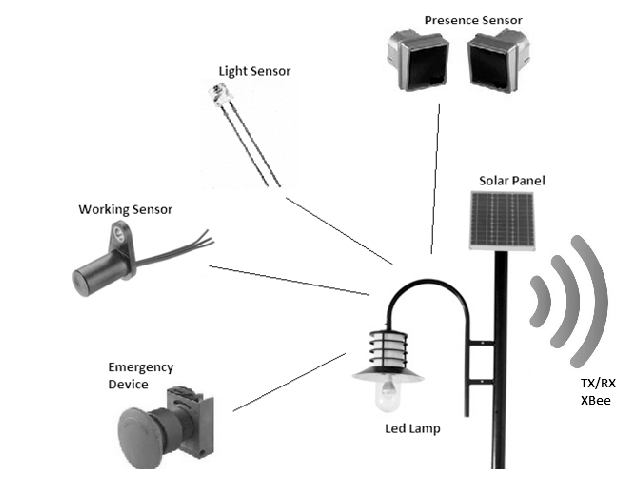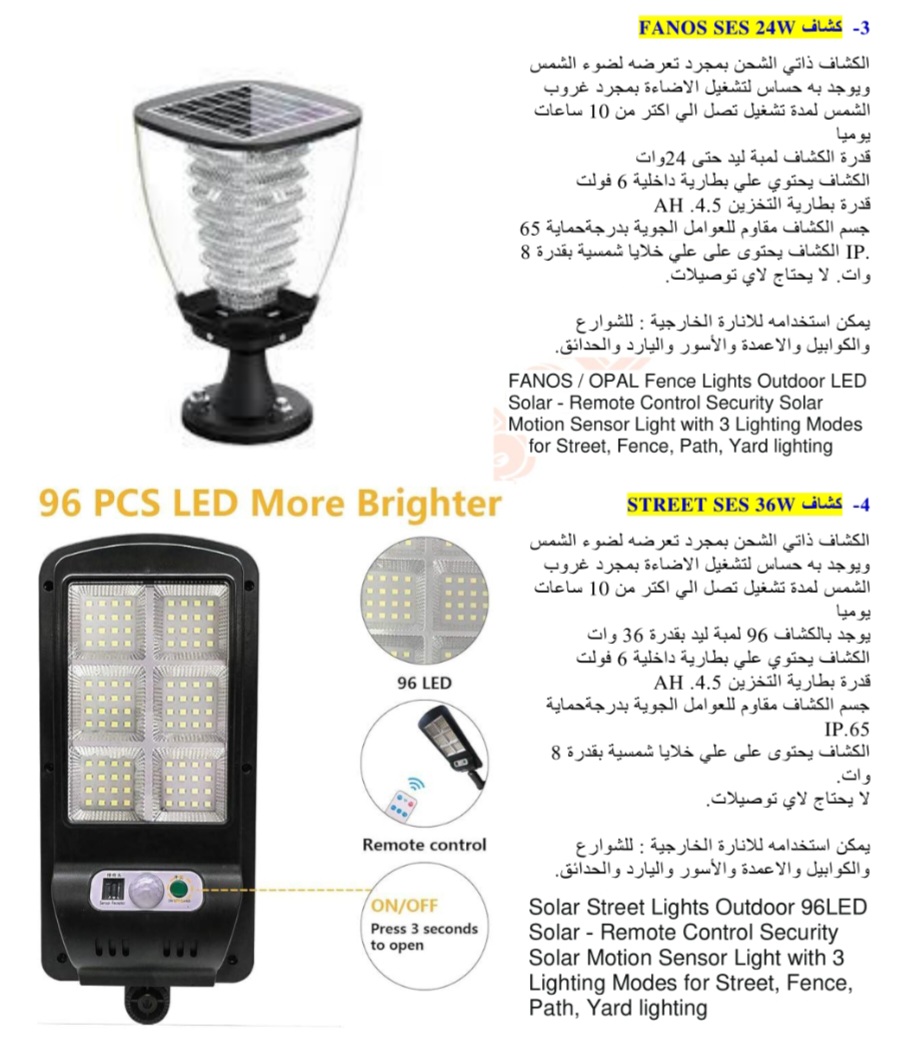BADRY Lighting Professionals' Co





Intelligent wireless street lighting system
Abstract—We propose an innovative wireless street lighting system with optimized management and efficiency.wireless devices which allow more efficient street lamp system management, thanks to an advanced interface and control architecture. It uses many sensors to control and guarantee the optimal system parameters; the information is transferred point-by-point using ZigBee transmitters and receivers and is sent to a control terminal used to check the state of the street lamps and to take appropriate measures in case of failure. The system allows substantial energy savings with increased performance and maintainability.
Keywords- automatio;, control system; lighting system; wireless networks; ZigBee; sensors
I. INTRODUCTION
Lighting systems, particularly within the public sector, are still designed per the previous standards of reliability and that they don't usually profit of latest technological developments. Recently, however, the increasing pressure associated with the raw material prices and also the increasing social sensitivity to CO2 emissions are leading to develop new techniques and technologies which permit significant cost savings and larger respect for the environment. In the literature we will notice three solutions to those issues.
The first one, and maybe the most intuitive, is the use of recent technologies for the sources of light. The LED technology is thought as best solution but it offers several edges. Researchers [1-4] have already thought of this risk, coming up with advanced street lighting system based mostly on LEDs.
The second resolution, and perhaps the most revolutionary, is to use of remote management system based mostly on intelligent lampposts that send info to a central management system, simplifying the management and maintenance. Researchers [5-6] have developed street lamp system using the GPRS transmission, power line carrier transmission or GSM.
Finally, the third solution is to use of renewable energy sources instead of typical power sources, therefore taking care of the environment. In this field, solar energy is the most often used resource.
Our work aims at unification of the three prospects, making an intelligent lamppost managed by a remote controlled system that uses LED-based lightweight supply and is powered by renewable energy (solar panel and battery). The management is implemented through a network of sensors to gather the relevant info associated with the management and maintenance of the system, transferring the data in wireless mode using the ZigBee protocol (which has been chosen among numerous alternatives because it is the most convenient, see clarification below). The ZigBee remote sensing and management systems are widely described in the literature; we can cite here as examples the applications for the lighting systems [7-12].
 BADRY Intelligent Road & Street Lighting
BADRY Intelligent Road & Street Lighting
II. GENERAL CONCEPT OF THE SYTEM
The system consists of a group of measuring stations in the street (one station located in each lamppost) and a base station located nearby. The system is designed as a modular system, easily extendable. The measuring stations are used to observe street conditions as the intensity of daylight and, depending on the conditions they activate or off the lamps. Other factors influencing the activation are: climatic conditions, seasons, geographical location, and many possible alternative factors. For these reasons every lamp is designed independent to decide about the activation of light. The base station conjointly checks if any lamp is correctly operating and sends the message using the wireless network to the operator who will act in case of malfunction.
A. Measuring Stations
The measuring station located in every lamppost consists of many modules: the presence sensor, the sunshine sensor, the failure sensor and an emergency switch.

Figure 1. Scheme of the lamppost with sensors.
These devices work along and transfer the information to a microcontroller that processes the information and chooses the action. Every of those sensors has an assigned priority of transmission, for instance, the emergency switch takes precedence over the others.
B. Presence detector
The presence sensor has the task of identifying the passage of a vehicle or pedestrian causing the switching on of lamps. This feature permits to activate the lamps solely when necessary, avoiding waste of energy. The sensor ought to be placed at the optimal height, neither too low (e.g. to avoid any erroneous detection of small animals) nor too high (to avoid failure to detect e.g. children).
C. Light sensor
Light sensor will measure the external light intensity to assure a minimum level of illumination of the road, as needed by regulations. The sensor should have high sensitivity within the visible spectrum, providing a photocurrent high enough for low-light luminance levels. The microcontroller drives the lamp so as to keep up the constant level of illumination. Clearly, this action isn't needed throughout daylight time, however is desired within the early morning and at dusk, when it is not necessary to operate the lamp at full power howevermerely to "support" the daylight. This mode permits to save electrical power.

BADRY Integrated SOLAR Street Lighting
BADRY Integrated SOLAR Street Lighting






















 BADRY Integrated SOLAR Street Lighting
BADRY Integrated SOLAR Street Lighting

